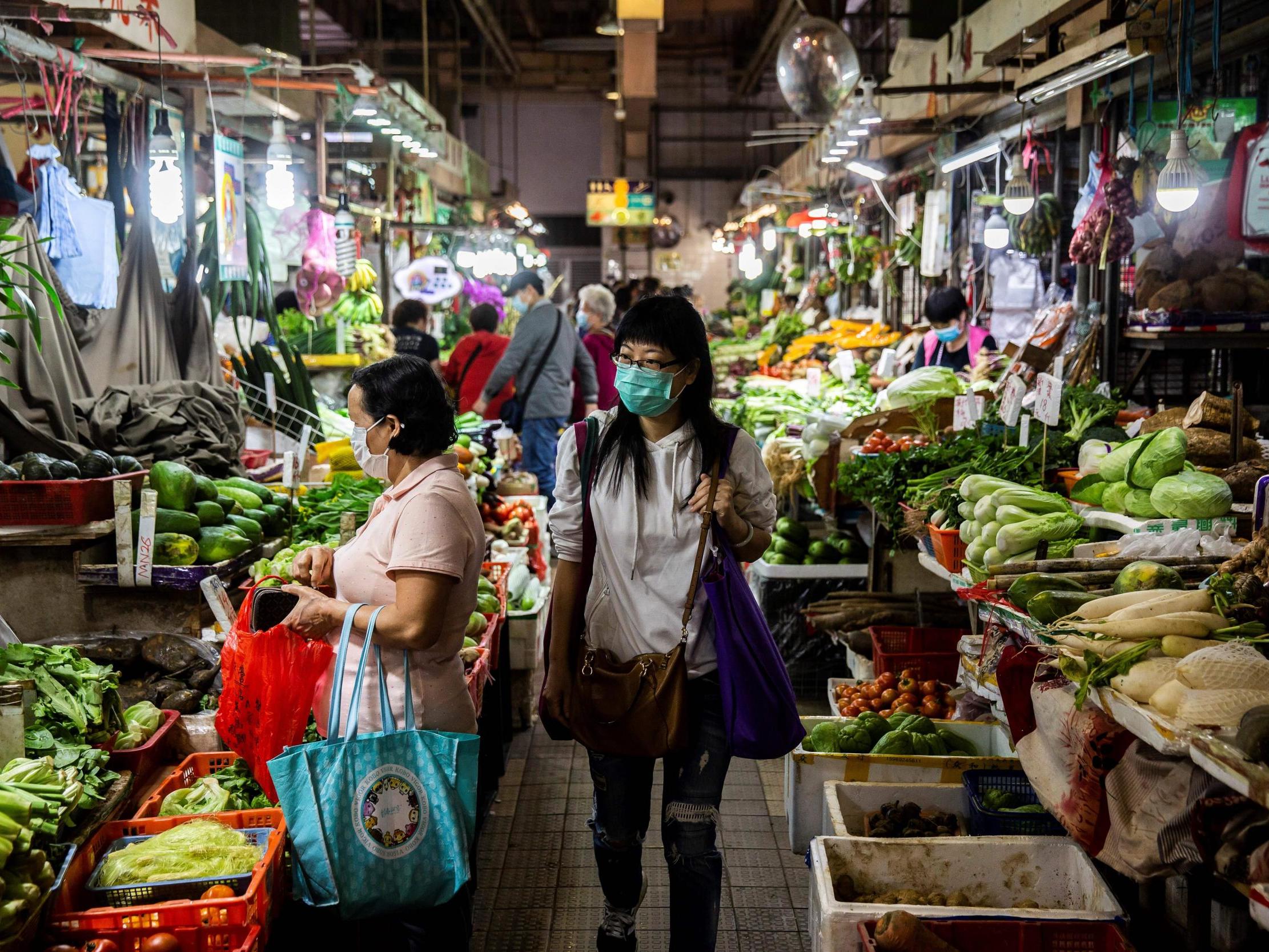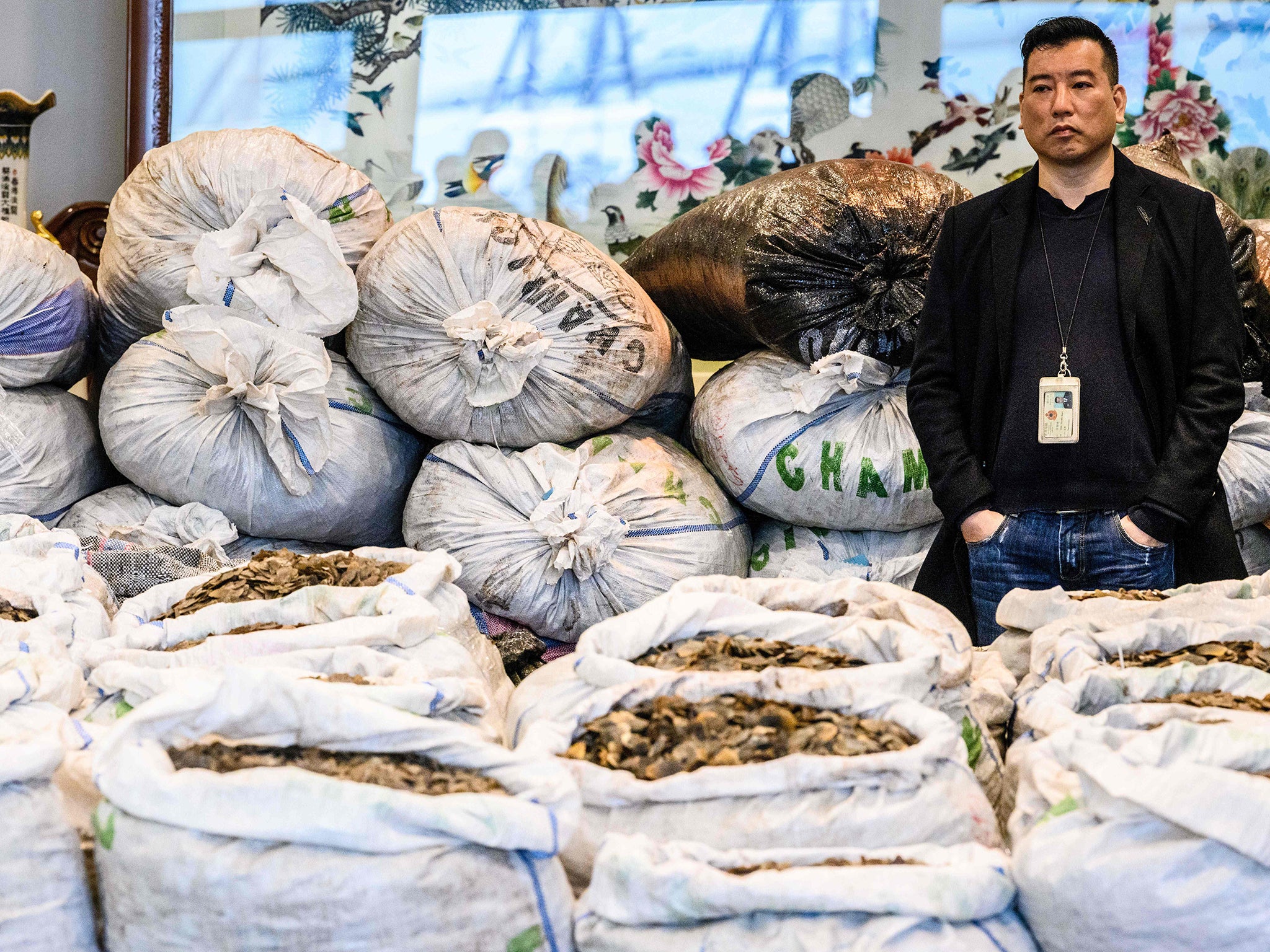Wet markets are not the problem – focus on the billion-dollar international trade in wild animals, experts say
Global wildlife sales not only carry risk of infectious diseases but threaten nearly 9,000 species with extinction

Your support helps us to tell the story
From reproductive rights to climate change to Big Tech, The Independent is on the ground when the story is developing. Whether it's investigating the financials of Elon Musk's pro-Trump PAC or producing our latest documentary, 'The A Word', which shines a light on the American women fighting for reproductive rights, we know how important it is to parse out the facts from the messaging.
At such a critical moment in US history, we need reporters on the ground. Your donation allows us to keep sending journalists to speak to both sides of the story.
The Independent is trusted by Americans across the entire political spectrum. And unlike many other quality news outlets, we choose not to lock Americans out of our reporting and analysis with paywalls. We believe quality journalism should be available to everyone, paid for by those who can afford it.
Your support makes all the difference.Coronavirus has created an entirely new lingo. We “Zoom” into meetings and “clap for our carers”. New York is ”on pause” to “flatten the curve” while Britain is figuring out how to “stay alert”.
“Wet markets”, a term that has become synonymous with the pandemic’s initial outbreak, is arguably the least understood.
It has been used interchangeably, and incorrectly, with wildlife markets where a mix of wild species are sold in cages. Zoonotic diseases can be transmitted as a result of the close proximity between wildlife and people.
Wet markets are essentially farmers’ markets with rows of stalls selling fresh fruit, vegetables, eggs, meat and fish. They were thrust into the spotlight late last year after one market in Wuhan, China played a suspected role in the coronavirus outbreak.
Wild animal sections are rarely found at wet markets. But conflation of the two has helped fuel calls for outright bans on wet markets by media, public health officials, politicians and celebrity animal welfare advocates.
It is a mistake that risks perpetuating dangerous stereotypes, experts told The Independent.
Dr Xaq Frohlich, a food historian at Auburn University, said that the danger of calling to ban wet markets “confuses a marginal activity [the wildlife trade] with a fundamental, basic and historically common activity. It would be like calling for the ban of farmers’ markets and restaurants”.
He added: “Regulated wet markets with inspections, proper training and safety codes are as safe as things that we take for granted in the United States.”
Of the initial 41 people hospitalised with the coronavirus in Wuhan, 27 patients had been exposed to Huanan Seafood Wholesale Market, according to a study in medical journal The Lancet.
However in the earliest case, the patient had no reported link with Huanan market and, in total, 13 of the 41 cases had no link to it.
A section of Huanan Seafood Wholesale Market reportedly sold 30 species of animals including live wolf pups, golden cicadas, scorpions and civets, according to The Guardian. China closed the market in January.
Scientists may never find the exact origins of Covid-19 (and a new report states there is “zero evidence“ that it came from a lab). On the whole, researchers agree that the most plausible explanation is that the virus made the jump from an animal to humans in a “zoonotic spillover” event.
Although the term wet market is typically used in parts of Asia, it could just as easily refer to other markets across the world.
For example, it is not common to refer to Pike Place Market in Seattle as a wet market, Dr Frohlich says, but it shares characteristics with those found in Asia.
The term differentiates from “dry” markets, where packaged goods, spices or textiles are sold, and gained popularity in Singapore in the early Seventies.
As you might expect, water features heavily: vendors hose down stalls to keep them clean, ice keeps meat fresh and tanks of water hold seafood.
Wet markets provide low-cost, fresh food for shoppers and income for legions of stall holders and farmers. It’s part of daily life: a place to gossip, haggle over prices and to share advice on recipes for seasonal produce.
A 2012 study in China linked the density of wet markets to good nutrition in children, particularly those in low-income families, according to the LA Times.
In some major cities, wet markets are being edged out as old neighbourhoods disappear.
Jim Wang grew up in Shanghai and has travelled across China to learn about local cuisine. His company, Shanghai Foodie, allows tourists to experience the city’s food culture from a local’s perspective.
“In the 1990s, large wet markets had different floors for fruits and vegetables, seafood, and livestock like chickens, ducks, geese, pigeons, some exotic birds,” he told The Independent.
“You could pick a live animal and the vendor would butcher on-site or else you might take it home alive so that it was fresher when you came to cook.
“This is the stereotype of what people think about Chinese wet markets now but they are extremely misunderstood in the West. In the past 20 years, Shanghai has become extremely clean.”
The 2003 Sars outbreak led to the local government banning live poultry at wet markets, he said.
“Wet markets are now more on the outskirts of the city and popular with those over 60, people who are retired. They go because the food is fresh and cheap. Older Chinese customers want to touch the food, negotiate with the vendors and talk as friends,” he added.
The markets have left older people with an inherent understanding of when food is fresh and in season.
Mr Wang said: “I once asked my dad why some fava beans I bought were so cheap. He knew right away that the beans were no longer in season because the season was very short, only the first week of May.”
Young professionals prefer the convenience of large chains and online delivery, he said.
“The younger generations in Shanghai have very competitive schedules. People often work 9am to 9pm, six days a week. Even if you’re a huge cooking fan, you would never go to a wet market. It’s exhausting to go from vendor to vendor and they are located far from the large office buildings, so it’s not practical.
“There’s around 27 million people in Shanghai and they need places to live. Wet markets become a very bad use of space.”
He added: “With online delivery, the logistics are incredible. The food arrives in around 30 minutes and prices are similar to wet markets.”
Mr Wang said that there are new wet markets created by popular chain stores such as Dingdong, and Hema, which is owned by Chinese e-commerce giant Alibaba.
“They are wet markets in the sense you can buy imported live lobster or Alaskan king crab. It’s very important for Chinese people to see that it’s fresh,” he said.
Conservationists and animal welfare advocates emphasise that campaigners’ focus should be on the global trade in wildlife, which not only threatens human health but puts nearly 9,000 species at risk of extinction.
David Quammen is an explorer and the author of Spillover: Animal Infections and the Next Human Pandemic. He became interested in infectious diseases while researching Ebola and has been warning of the risks ever since.
On a call this week, he said: “What we need to do is get a handle on the multi-billion dollar international trade in wild animals taken from wild habitats for food and often shipped from one country to another.”
The illegal trade in wildlife is estimated to be worth up to $20bn (£16.5bn) per year, according to Interpol and the United Nations Environment Program.
Ben Williamson, programs director of World Animal Protection US, told The Independent that the organisation was “not opposed to wet markets in principle. However, we are opposed to markets selling live wild animals and wild animal products”.
He said in a statement: “There is immense and intense animal suffering associated with the trade in wild animals taking place in sections of wet markets and other wildlife markets, whether the animals were sourced from the wild or commercially bred in captivity, or whether consumers purchase the animals dead or alive.”
In February, China issued an unprecedented nationwide ban on all terrestrial wild animal commerce and consumption, including exotic species raised on farms. Authorities are now considering changes to the law.
Anthropologists Christos Lynteris and Lyle Fearnley warned recently that the western media’s portrayal of wet markets as “emblems of Chinese otherness” had fueled anti-Chinese sentiment.
Donald Trump and others in his administration have made attempts to rebrand Covid-19 as the “Chinese virus”, rejecting the World Health Organisation (WHO) stance on not using geography when naming diseases.
Since the coronavirus outbreak, the number of Asian-Americans reporting verbal and physical assaults has spiked, The New York Times reported.
Viewing the coronavirus as an external problem by focusing on a seemingly unfamiliar concept, like a wet market, is deeply problematic, said Dr Frohlich.
“That raises a problem from a public health perspective because the more that people think of an epidemic as coming from the outside, the less they pay attention to their own role and risks in their own environment for these kinds of illnesses.
“By focusing on wet markets, people ignore the extent to which there are things happening in the US that also are contributing to increased risk of zoonotic disease.”
Dr Frohlich pointed to the dangers posed by intensive, industrialised farming.
In 2009, the H1N1 swine flu, which originally came from pigs, was first detected in the US before becoming a pandemic. Hundreds of thousands of people died. The UN’s Food and Agriculture Organization noted that “livestock health is the weakest link in our global health chain” in a 2013 report.
And the taste for wild animals extends far beyond Asia.
“I live in the south and here you can find an interest in rattlesnake and alligator meat. These are not commonly eaten things, but you’ll find them as a kind of novelty,” Dr Frohlich said.

Mr Wang said that stereotypes are common when it comes to food culture in China. “I’ve been doing food tours for a long time and even the most curious foodies will ask if Chinese people eat dogs. There might be a few villages that have this tradition but to think that 1.5 billion Chinese people eat dogs is not accurate.
“Some of these stereotypes come from China’s history. In the 1960s, we had a huge famine. The economy was the opposite of what it is right now and people were forced to eat things, not willingly or to enjoy, but to survive.”
He added: “My point is that it’s extremely unfair to label Chinese as eating bats or dogs when the whole country is as big as Europe.
“The origin of Covid-19 seems connected to the wet market in Wuhan. I’ve also seen the picture from that market selling civets or other exotic animals. But the word ‘wet market’ doesn’t mean an evil place. It’s just a place for people to find food bargains and make friends.”
The Independent is campaigning for tighter restrictions on wildlife trading.
Join our commenting forum
Join thought-provoking conversations, follow other Independent readers and see their replies
Comments